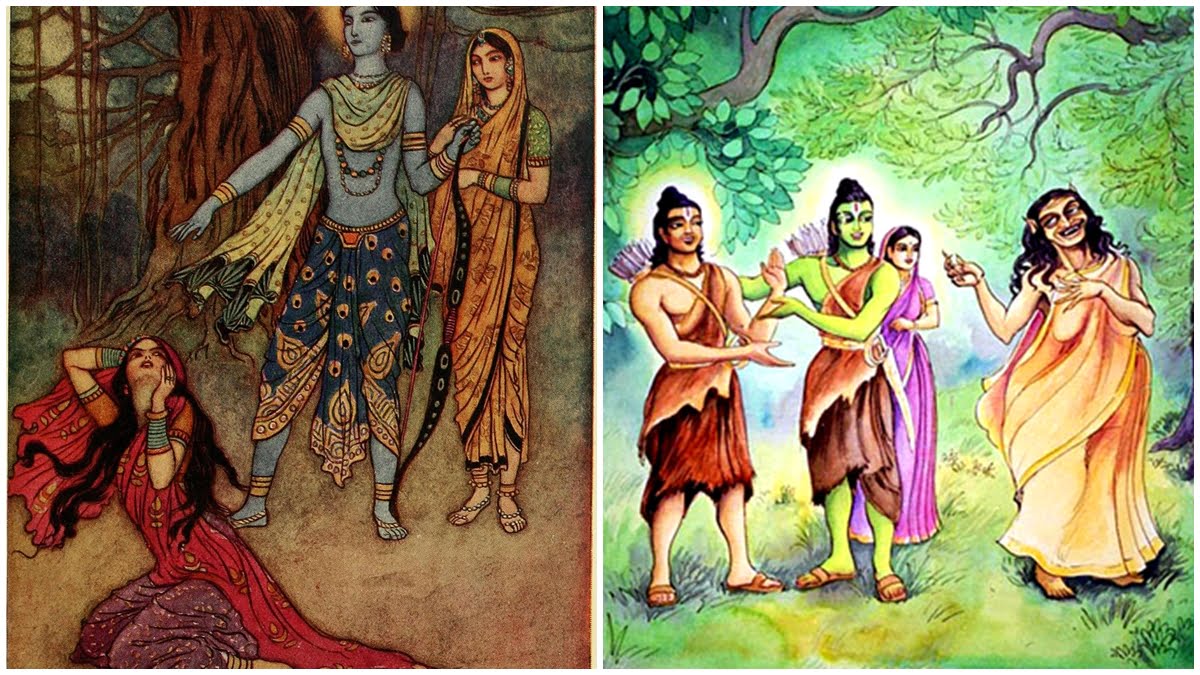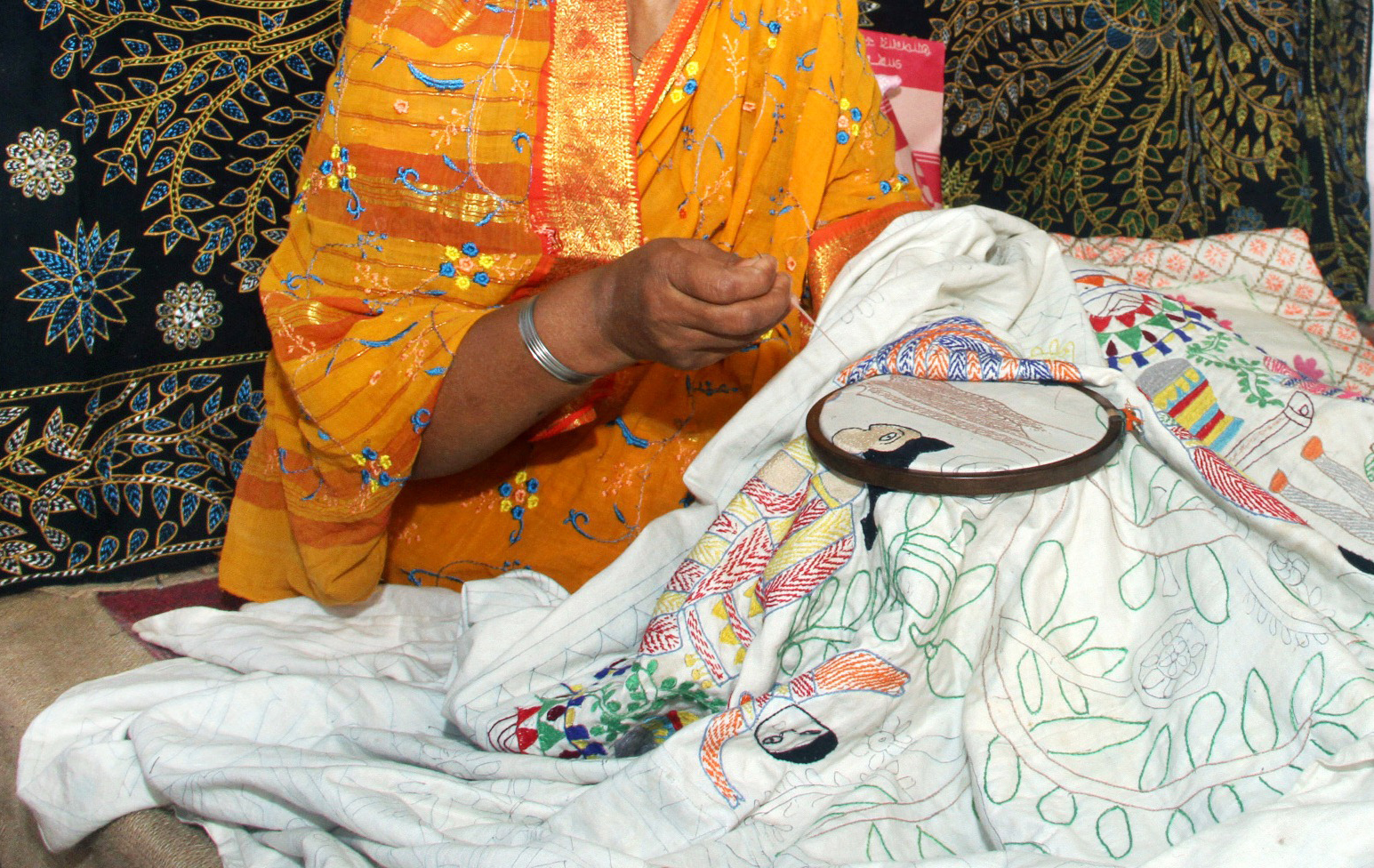Not so long ago I wrote a piece on Soorpanakha in which I tried to deconstruct the Lakshman-Soorpanakha episode from a different lens. I looked at Soorpankaha as a woman who exercised her sexual agency, made advances and was punished by Lakshman who mutilated her.
Of course, in Soorpanakha’s case there have always been counter-arguments by conservatives and traditionalists that claim that Soorpanakha had deliberately made this move to attract Lakshman’s wrath for the war to start, that it was part of a larger design and others that justify her mutilation at the hands of Lakshmana which would send out a message to all womenfolk to “behave” themselves, which is also incidentally the message that the 20th century composed Radheyshyam Ramayan, a major source of the Ram Leela performances in North India gives.
Also read: Handy Lessons From Soorpanakha’s Story For Today’s Woman
Other arguments are quite scathing and didactic in their attack of Soorpanakha, claiming her actions are tantamount to what in today’s lexical parlance we would call “sexual harassment” and that she had to be punished. And while all these narratives, arguments and parallel truths can and ought to be held together, there is no denying that the discomfort sitting right in the middle of the Soorpanakha and the Vali episodes is reflected in most versions of the epic tale. In this article, I try to trace more such women in mythology who had expressed their sexual agency: were there other women in our epics who displayed a similar kind of sexual autonomy, who were explicit in their advances towards men? And were they meted out the same treatment as Soorpanakha? Were they demonised like her?
In this article, I try to trace more such women in mythology who had expressed their sexual agency: were there other women in our epics who displayed a similar kind of sexual autonomy, who were explicit in their advances towards men? And were they meted out the same treatment as Soorpanakha? Were they demonised like her?
I came up with the instances of two women who had very consciously exercised not just their sexual agency and made sexual advances at men, but had approached men who were primarily indisposed to any kind of a sexual union. I will cite the more popular of the two first: the apsara Menaka, who through her charm, art and beauty seduced the great sage Vishwamitra. She kept at it, trying ceaselessly till she had succeeded in distracting the sage who finally gave in to her. She even gave birth to a girl who would later be known as Shakuntala but neither Menaka nor Vishwamitra took up the responsibility of parenting her. Shakuntala was raised by another rishi by the name of Kanva in his ashram. Menaka, in the meanwhile, left for her celestial abode after having birthed Shakuntala.
The second instance that we do not normally come across and is often eliminated in the hegemonic re-tellings and oral discourses in religious spaces of the Ramayana is the episode of Risyashringa’s seduction by Rama’s elder sister Shanta. According to the narrative, the kingdom of Rompada or Lompada is struck by famine and it is only Rishyashringa, an austere rishi who can absolve the land of this curse. But for this, first he has to be freed from his father the rishi Vibhandaka’s grip who has kept him a celibate and within a confine into which no female of any species is allowed to venture. It is decided that Dasharatha’s biological and Rompada’s foster daughter Shanta should approach the ashram and seduce Rishyashringa in his father’s absence alluring him with her voice and making him come out of the confine.

In the narrative plot, this episode strangely foreshadows the Sitaharan episode where Ravana concocts a similar plan to make Sita step out of the confine which Lakshmana has drawn around her. So the Lakshmanarekha or the line of confinement drawn by Lakshmana can be traced back to Vibhandaka’s act of keeping his son Rishyashringa in an insulated circle to safeguard his celibacy which will continue to ensure his unchallenged power through his son.
Shanta succeeds in seducing Rishyashringa and making him step out of his confine. The two unite sexually and then Rishyashringa performs a yajna which brings rains to the kingdom of Rompada followed by another set of rituals, the Putrakameshthi yajna that fill the wombs of Dasharatha’s queens and lead to the birth of Rama, Lakshmana, Bharata and Shatrughna.

While Shanta’s role in Rama’s birth through her seduction and subsequent union with Rishyashringa remains largely invisibilised and barely finds a mention and so is easy to miss unless one delves deep into certain versions of the Ramayana, Menaka is excused for she is not a human and therefore does not fall under the purview of the moral framework within which humans are supposed to operate. Menaka is a celestial being, an apsara, Indra’s consort, and cannot be expected to behave or be a part of the same value system as a mortal woman. And therefore, just like the label of sexual promiscuity cannot be applied to Menaka to regiment or judge her behaviour, the construct of normative motherhood also cannot be forced on her. But then by that logic, even Soorpanakha’s actions cannot be judged by applying a moral framework meant for humans for she is a non-human, a rakshasi from a different clan and possibly informed by a different moral sensibility. And yet the truth remains that Soorpanakha gets an extremely raw deal after being made fun of by both Rama and Lakshmana in even the hegemonic versions of the Ramayana like the Valmiki Ramayana and the Kamban Ramayana.
Also read: Women In Hindu Mythology: Is Their Space Too A Myth?
Why is Soorpanakha demonised while Menaka and Shanta are not? Why are Soorpankha’s advances seen as sexual harassment while Menaka’s and Shanta’s not? And why Soorpanakha’s advances lead to her inhuman mutilation whereas Menaka’s and Shanta’s are rewarded. In Menaka’s case, she was expressly sent by Indra to seduce Vishwamitra whose growing powers were making Indra insecure and anxious. In Shanta’s case she was sent as part of a larger design and a collaborative agreement between two kings and father figures with the intention of saving one kingdom and bringing a successor to another. Thus both these women had state patronage and were sent to accomplish a mission. They were not acting out their individual choice. They were merely using their sexuality under state-specified directives. And that is the reason we do not stigmatise them or regard their actions as transgressive or excessive. For their actions had state sanction and Soorpankha’s did not.
So the question is not about sexual agency or female agency; it is about who or what power or sanctioning authority validates this action; the institutional ratification which can justify otherwise immoral and unethical acts by women for they are carried out in the interest of the state. Acts that seem to tell us on face value that these women were really independent and autonomous and liberated only to make us realise that these sexually assertive acts, despite their frequent recurrence to convey the tension between the hermit and the householder were approved by higher patriarchal authorities. And coming to think of it, it really fascinates me how myths have a strange way of manifesting themselves in popular culture. Shanta and Menaka are so much like the protagonists of the films Raazi or Toilet: Ek Prem Katha where their seemingly transgressive actions and rebellious behavior are depicted approvingly because they are working in the larger interest of the patriarchal state.
That is why when Jaya in Toilet…leaves her husband Keshav, we do not judge her for she is an emissary of the state’s Swachha Bharat Abhiyaan and when Sehmat in Raazi betrays the love of the man she marries, she is doing so in the interest of her country.
That is why when Jaya in Toilet…leaves her husband Keshav, we do not judge her for she is an emissary of the state’s Swachha Bharat Abhiyaan and when Sehmat in Raazi betrays the love of the man she marries, she is doing so in the interest of her country. The patriarchal institution of the family, thus, cannot only be challenged but disrupted too when it is in the larger interest of bigger, more powerful patriarchal authorities like the nation state or the government. Whereas Soniya in Jism, Jojo in Sacred Games and countless other women who exhibit their sexual agency challenging normative constructions of womanhood and female sexuality are lamentably depicted and acquire a vampish Soorpankha-like quality as they are exercising their choice in an individual capacity.
References
Menon, Ramesh. The Mahabharata: A Modern Rendering. Lincoln: iUniverse, Inc., 2006.
Pattanaik, Devdutt. Sita: An Illustrated re-telling of the Ramayana. New Delhi: Penguin India, 2013.
Ramanujan, A K. “Three Hundred Ramayanas: Five Examples and Three Thoughts on Translation.” The Collected Essays of A K Ramanujan. Ed. Vinay Dharwadkar. New Delhi: Oxford University Press, 1999. 131-161.
Richman, Paula, ed. Many Ramayanas: The Diversity of a Narrative Tradition in. California: University of California Press, 1991.
About the author(s)
Dr. Shyaonti Talwar is an academician, researcher and a writer whose areas of interest include popular culture, social inequality, literature, mythology and gender. A poet and a performing artist, she loves creative expressions and feels it is important to voice her critical observations. Writing is therapeutic for her and makes her feel awake and alive. She can be found on LinkedIn and Twitter.





Indeed a interesting writing. For the first time I came to know about the episode of Shanta. I really didn’t have any idea about her. Thank you so much for this unknown information.
You have maintained a non judgemental perspective in the article ,but the fact is blatant enough …across the ages,that women don’t have the right to express their inner instincts independently…they cannot have sexual freedom…in rare instances they are ‘given’ the liberty, albeit for a larger benefit…they are used as a bait by the still prevalent patriarchal system at domestic level and higher levels…
A very thought provoking article!
Shyonti your reads always awaken me to see things in a different dimension all together!!
Superb peice😍